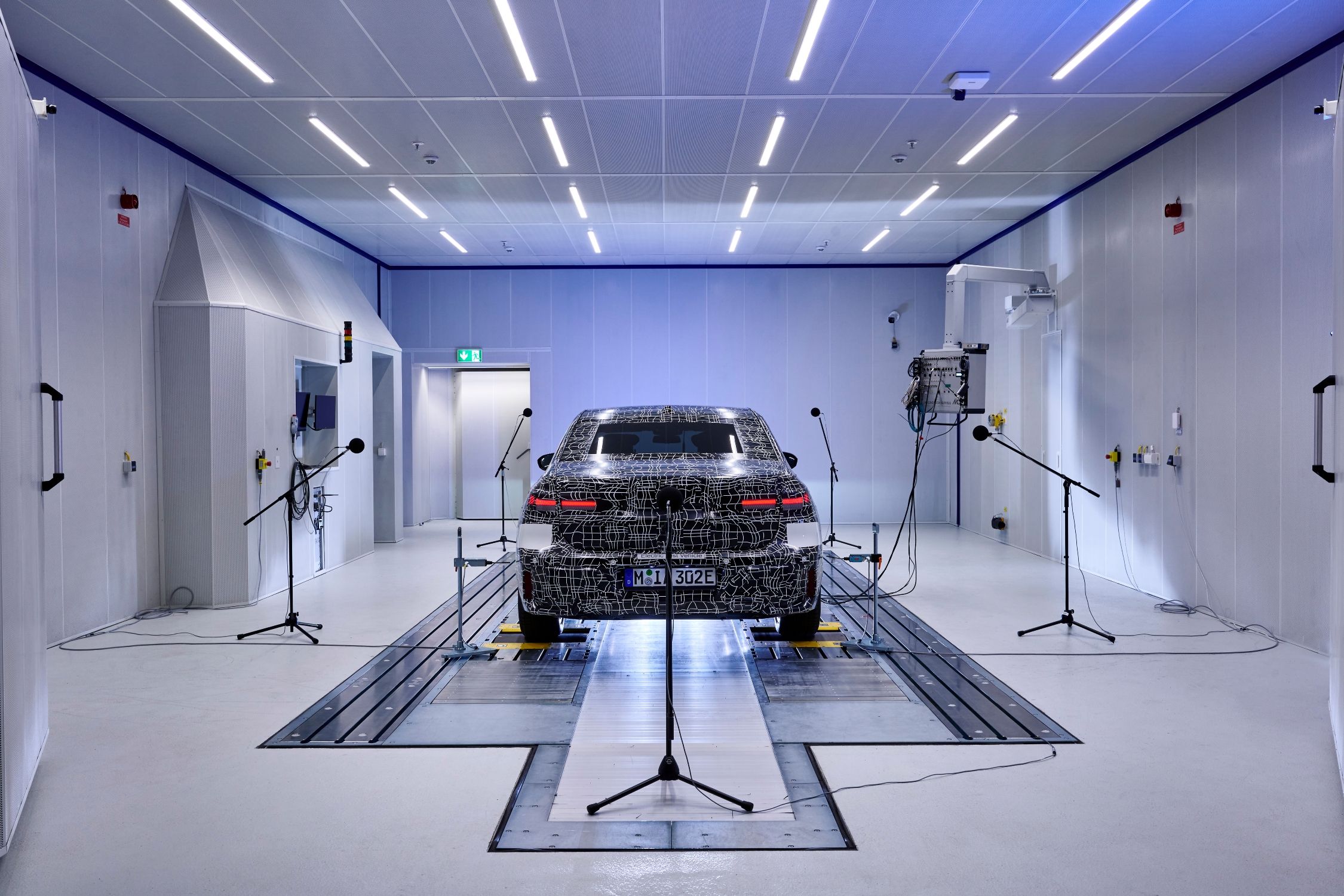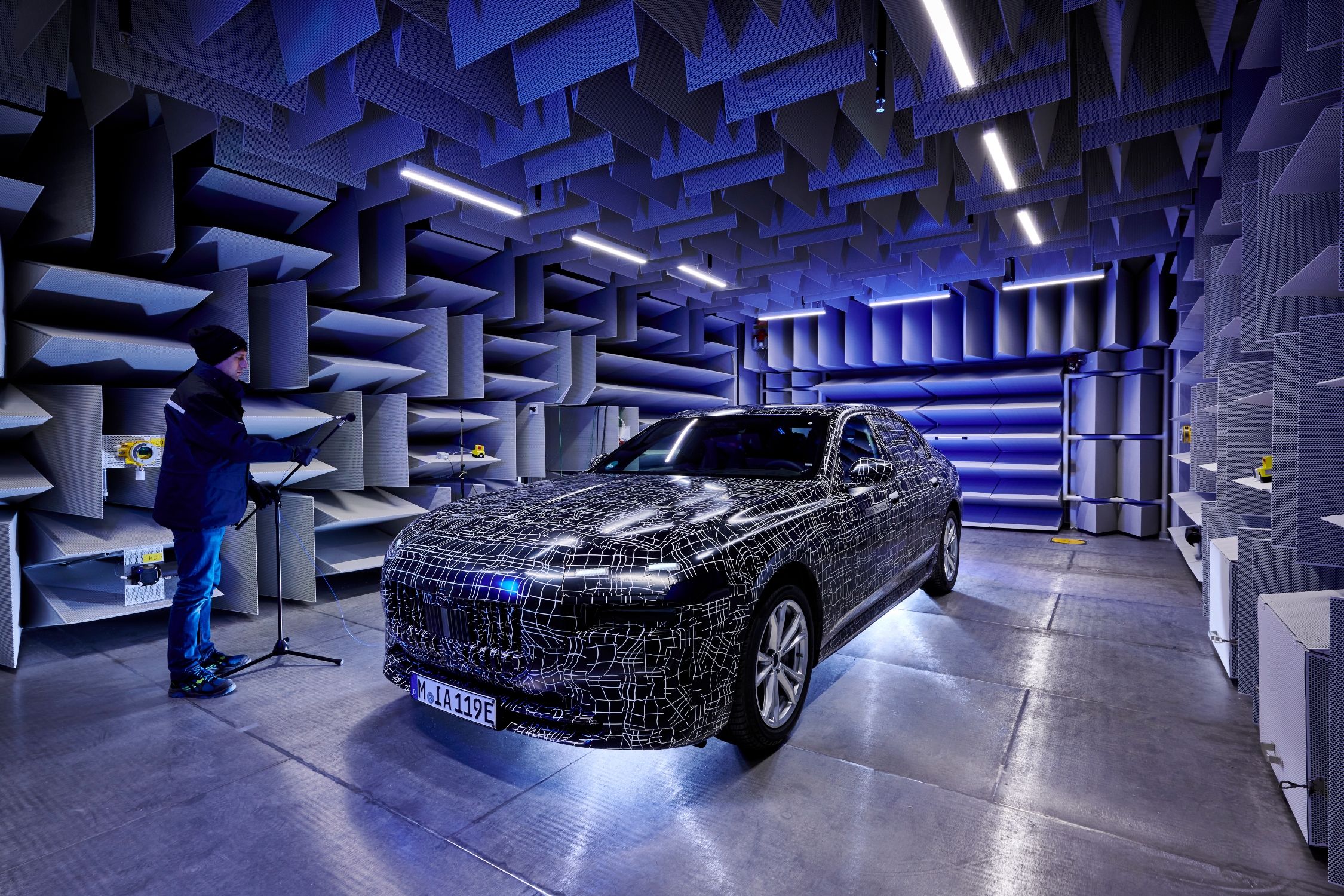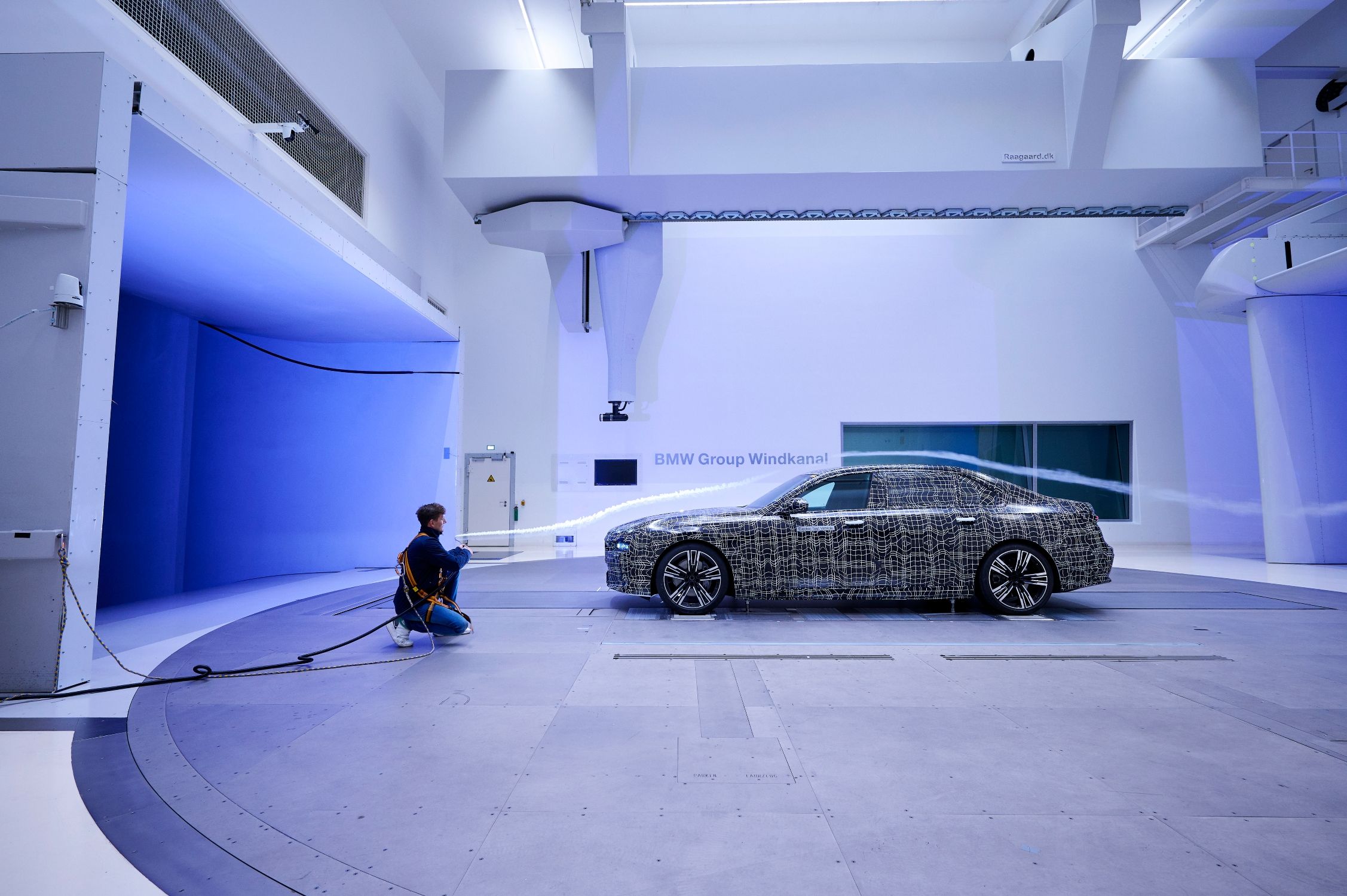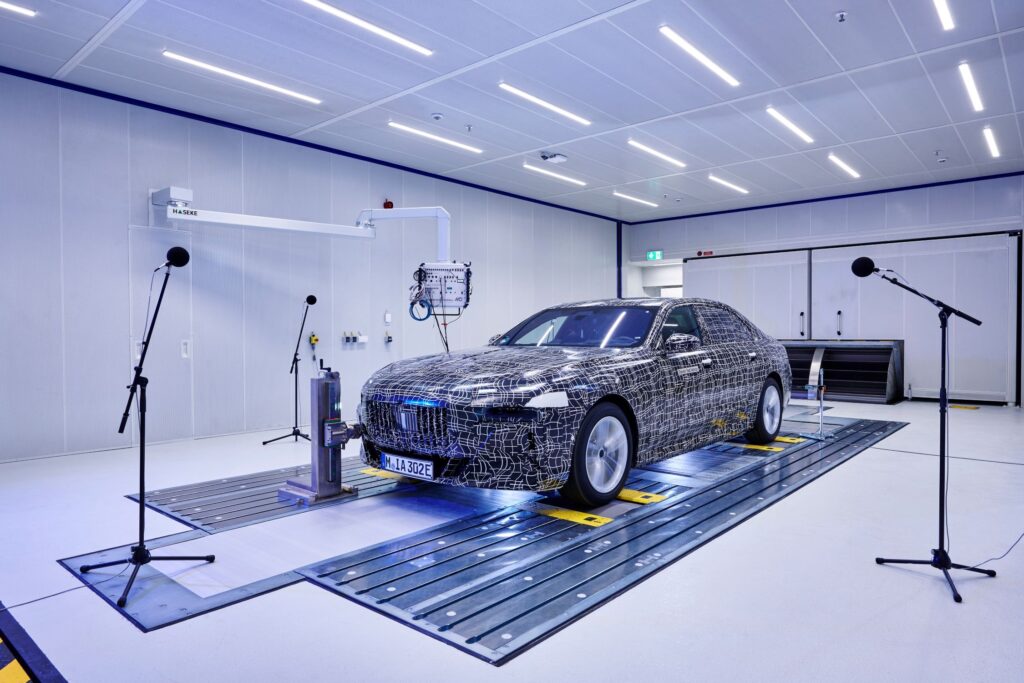Development details of the BMW i7 have been revealed by the German OEM – the car is currently undergoing its next phase of testing in the lab involving NVH refinement and EMC analysis.
As the OEM notes, acoustics are an important factor for driving comfort, which is especially important in this class of vehicle, so near-production prototypes of the BMW i7 – and indeed all other model variants of the future BMW 7 Series – are undergoing extensive acoustic evaluation.
At the company’s Research and Innovation Centre (FIZ) in Munich, Germany, test and development engineers have begun checking the vehicle’s sound emissions. This includes detailed analysis of motor and rolling tire noise, the aeroacoustics and vibration comfort, to fully determine the sedan’s acoustic properties. This has also included precise alignment of acoustic pedestrian protection and the motor sound emitted in the interior of the BMW i7 – the latter having been developed as part of BMW IconicSounds Electric, a collaborative venture between the BMW Group and music composer Hans Zimmer. The BMW i7 will offer two sound options: silence or a BMW IconicSounds Electric option.

The acoustic test benches at the new branch of the BMW Group’s Research and Innovation Centre FIZ North are specially designed to meet the requirements of electromobility and enable all driving situations to be replicated realistically. Here, any irritating noises registered during test drives on the road can be recreated and selectively eliminated. Roller dynamometers with a unique quiescent level and interchangeable surface coverings enable the measurement and validation of drive acoustics and tire noise on all road surfaces.
Great importance has been attached to noiseless power delivery of the electric motor, according to the OEM. Contributing factors here include acoustic optimization of the electric drive units, a model-specific mount concept and a newly developed noise encapsulation for the electric motors. Taken together, these measures enable the BMW i7 to achieve effective acoustic decoupling across a wide frequency range, thereby ensuring maximum acoustic comfort in the interior.
BMW engineers at FIZ North use an acoustic climate test bench to assess a wide range of noise sources and refine sounds such as the acoustics of the air conditioning and ventilation system throughout the entire vehicle – in particular at very low or very high temperatures.
 In the same way as the motor and tire rolling acoustics, ambient noise can also be selectively reduced. For this purpose, the aeroacoustics of the BMW i7 have been scrutinized in an acoustic wind tunnel.
In the same way as the motor and tire rolling acoustics, ambient noise can also be selectively reduced. For this purpose, the aeroacoustics of the BMW i7 have been scrutinized in an acoustic wind tunnel.
The new acoustic simulator at FIZ North enables the noise emitted in day-to-day traffic to be emulated under laboratory conditions – this includes the sounds made at road construction sites and by passing trucks, for example. Numerous loudspeakers are used to project these sounds onto the vehicle prototypes from all directions to test the effectiveness of the interior noise insulation.
In terms of electromagnetic compatibility, in the so-called EMC absorber hall at the FIZ, prototypes of the new sedans have been exposed to powerful electromagnetic fields so as to test the susceptibility of their electrical systems to interference and see how they interact with the environment. Test engineers have analyzed the diagnostic results transmitted from the vehicle in real time via fiber optic cables. As the OEM explained, this part of the program is especially important to ensure reliable functioning of the suspension control and assistance systems and interference-free reception of online data, telephone, radio, TV and navigation signals.



